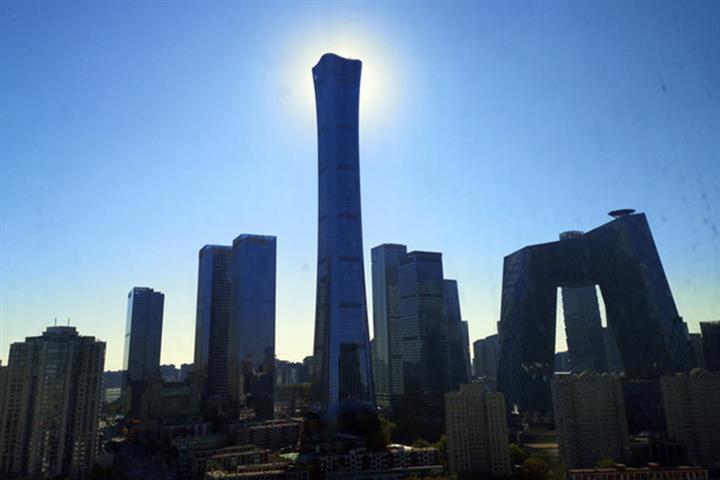 China Should Revise Air Quality Standards, Experts Suggest
China Should Revise Air Quality Standards, Experts Suggest(Yicai Global) Nov. 30 -- Experts attending the China Blue Sky Forum 2022 suggested the Chinese government revise air quality standards to further improve the environment, as the number of cities meeting the requirement for fine particulate matter, or PM2.5, grows every year.
China should also continue to promote structural optimization and the low-carbon shift in energy, transport, and industry to help reduce pollution and coordinate carbon cuts, the experts added.
Since 2012, China has been in a “golden decade” of air pollution prevention and control, according to the report released yesterday by Clean Air Asia. From 2013 to 2021, the annual average PM2.5 concentration in the country fell about 56 percent, while gross domestic product growth averaged a 6.6 percent clip.
The mean annual PM2.5 concentration in Chinese cities that monitor it is below the standard limit, said Wan Wei, project director of Clean Air Asia China. Continuing to improve the standard can better protect public health, he added.
Comparing the development and achievements in air purification and climate change of 20 countries, China is the fastest-improving country with the highest emissions control standards, Wan noted.
China’s carbon emissions have fallen 34.4 percent in the past decade, and the development of its new energy vehicle sector is particularly remarkable, Wan pointed out. China is the country with the largest number of NEVs and NEV sales in the world, accounting for half of the global total.
Over the past decade, the gains in better air quality have been between 1.5 times and five to 10 times the cost of treatment in China, said Zhang Shiqiu, a professor at the College of Environmental Sciences and Engineering of Peking University. In the future, China’s continuous air quality improvement will have huge benefits.
If air quality continues to improve based on the level of 2020 and meets the stricter targets proposed by the World Health Organization, the health benefits can account for about 1 percent to 4 percent of GDP, Zhang said.
The WHO updated and issued the Global Air Quality Guidelines in 2021. Comparing the new recommended values with the standard limits in developed countries and regions, such as the European Union, the United States, and Japan, the average annual and 24-hour concentration limits for PM2.5 in China’s air quality standards are set at 0.035 milligram per cubic meter and 0.075 mg/m³, respectively, which are still loose.
China’s total greenhouse gas emissions will continue to rise in the future, but it is hard for the country to realize the commitment to go from carbon peak to carbon neutrality faster than developed countries, He Kebin, a member of the Chinese Academy of Engineering and a professor at the School of Environment of Tsinghua University, said at the forum.
Editors: Shi Yi, Futura Costaglione